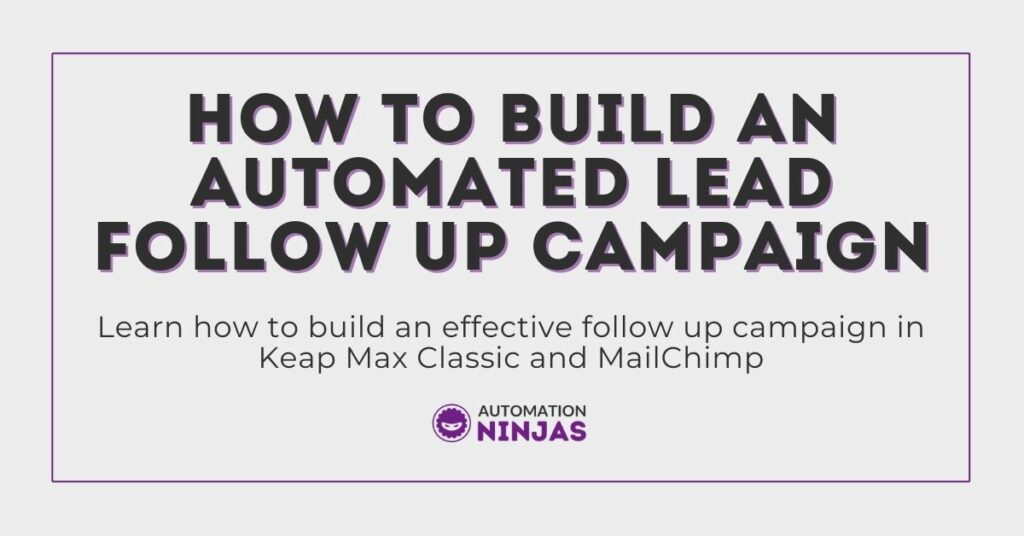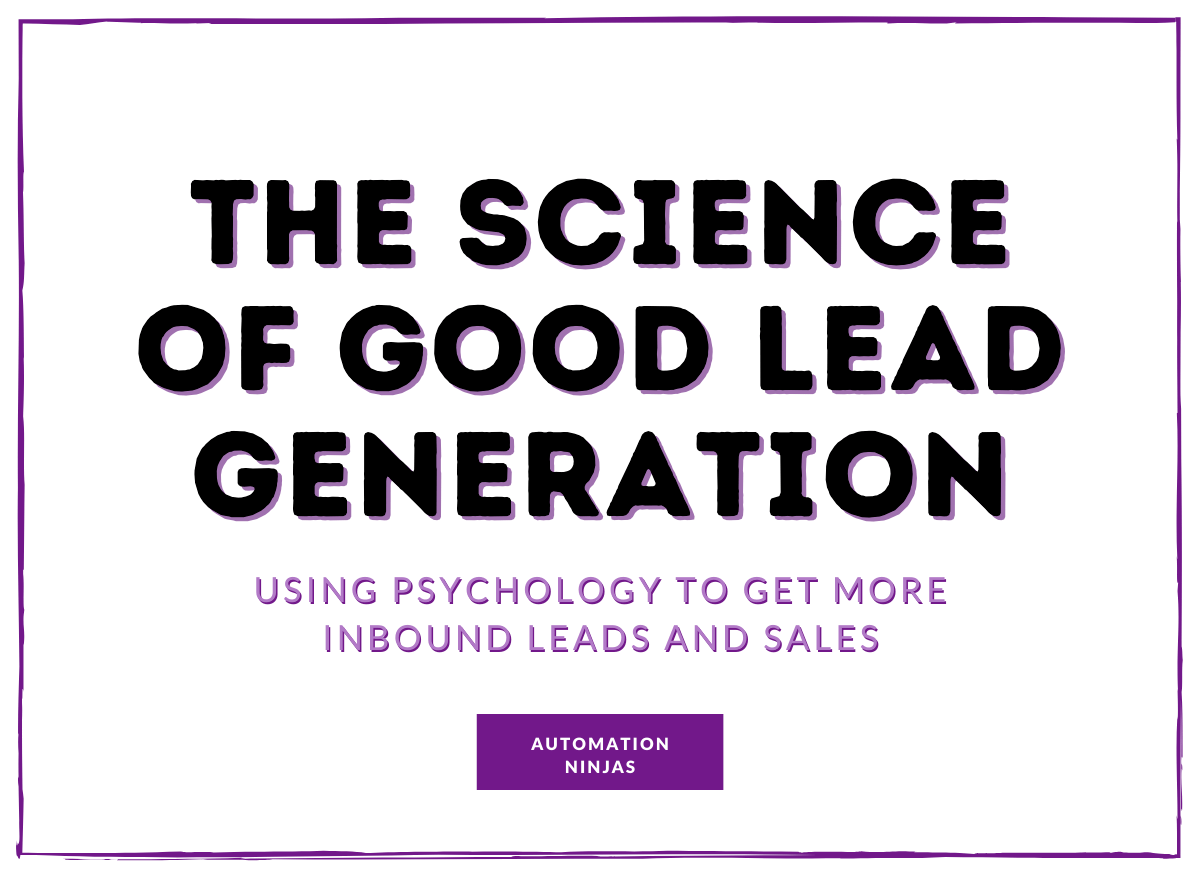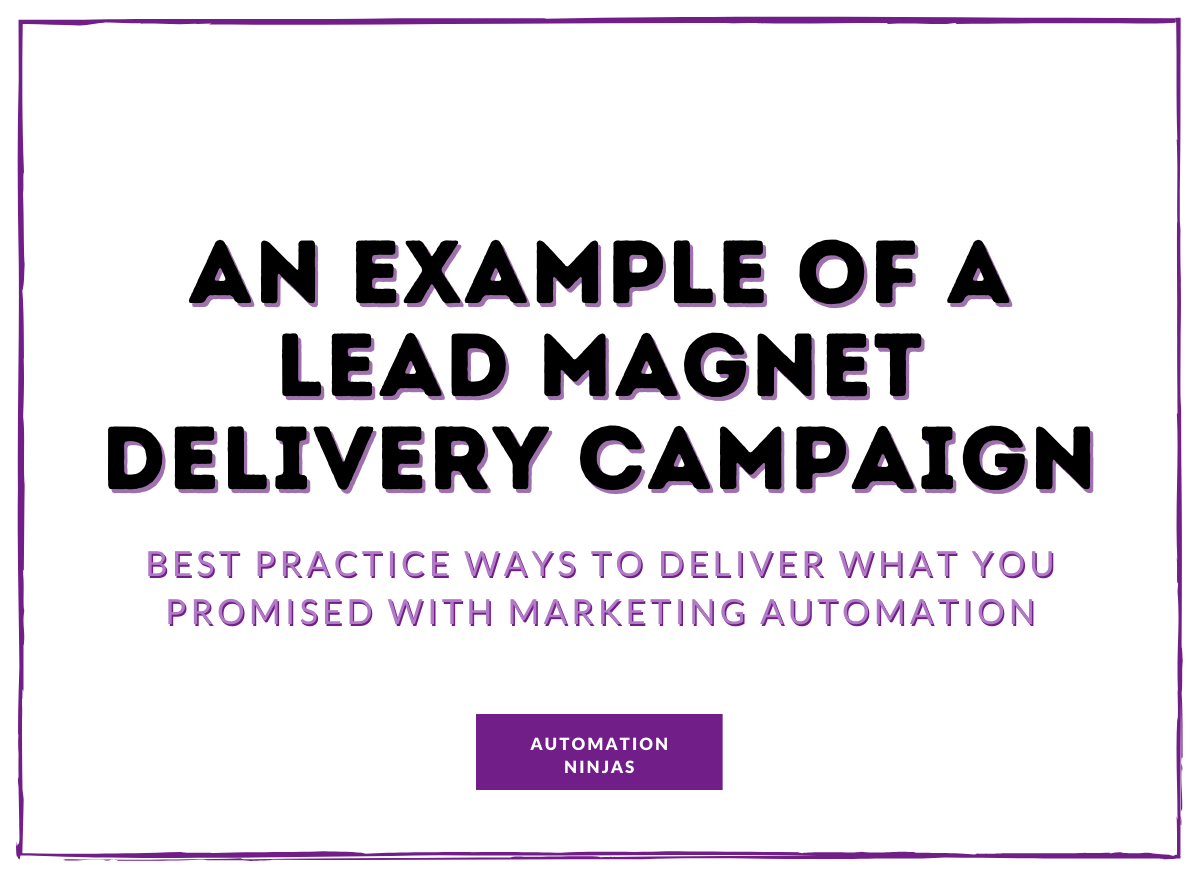Where do contacts go after they’ve downloaded your lead magnet?... “Nowhere” is the likely answer. If you don’t have lead follow up emails, you’re effectively luring your contacts into no-mans-land then leaving them to fend for themselves. They have this shiny new lead magnet - then that is that.
You might be thinking “hmm I never knew these needed following up on”.
But what are the chances if you go into your downloads folder or emails right now, there will be some form of a lead magnet that YOU have downloaded but never used?

And that, my friend, is precisely why you need lead follow up emails.
What exactly do we mean by lead follow up emails?
A lead magnet can be any eBooks, checklists, guides or similar that you have on your website, that is given for free in return for someone’s contact details. Anyone who takes part in this exchange can be classed as a potential lead.
Lead follow up emails are a string of gentle nudges to remind people to actually make use of the lead magnet they’ve downloaded. You’re wanting to encourage consumption of the resource they now hold in their god-like hands.
Lead follow up emails are also a form of short term nurture. Someone who has downloaded this lead magnet will be getting their first taste of you. Make it good. Make it juicy. Make it delicious. Make yourself memorable.
Speaking of delicious, it’s sort of like icing on the cake. The home-baked, layered cake full of goodness is your lead magnet. But a cake isn’t much without the icing and décor. These are the details that help us know who the cake is for, what event is happening and gives an indication of the flavour too.
Your lead follow up emails are the icing. Instead of just handing over a lead magnet to someone and leaving them to figure it out - like many do - you’re going to guide them along the way, so they know exactly what to expect. You want to tell them:
- How to use the resource to get the most from it
- Why they should invest their time in using it
- What to expect as a result of using it well

Sorry for the food references. If you’ve read my post on how to build a welcome campaign you’ll know I love a food analogy. #alwayshungry
On that note, you must not get lead follow up emails confused with welcome emails.
Welcome emails are where you introduce your company, your expertise and why someone should trust you and look forward to your emails. Lead follow up emails are far more specific. You’re not wanting to talk about you and how you can help - you’re talking about your resource and how the reader can get the most of it.
This not only makes sure that the person in question is using (and enjoying) your lead magnet. But it also sets a standard for yourself. Anyone getting these emails is getting a taste of how much your care for customers and an inclination to your expertise. This gives you a natural lead into a few sales emails at the end of your follow up, too.
You can learn more about short term nurture marketing in 'What is short term nurture marketing?'.
Now you know what lead follow up emails are and why you need them. It’s time to make sure your campaign is built in the best way possible. So let’s move on to exactly how to build a lead follow up campaign in your marketing automation platform.
Building a lead follow up campaign in: Keap Max Classic
Here at Automation Ninjas HQ we use Keap Max Classic (formerly Infusionsoft) for all of our internal marketing campaigns. It’s a popular marketing automation platform, with plenty of functions and lots of integration opportunities, too. Importantly, it’s perfect for building a lead follow up campaign.
Triggering the lead follow up campaign
To begin with, you need to get people into your campaign when they sign up for your lead magnet. In the example below, we have used three points for entry to the campaign, to show you the main types of entry options you may be considering:
- A landing page
- A web-form
- A trigger tag
We won’t go into the details of how to set these up, as this will be fully dependent on your own website set-up. Us Ninjas use landing pages and tags to trigger our own campaigns.
Whatever campaign trigger you are using, the rest is the same for all. First, you need to actually give your contact the lead magnet they’ve signed up for (duh).
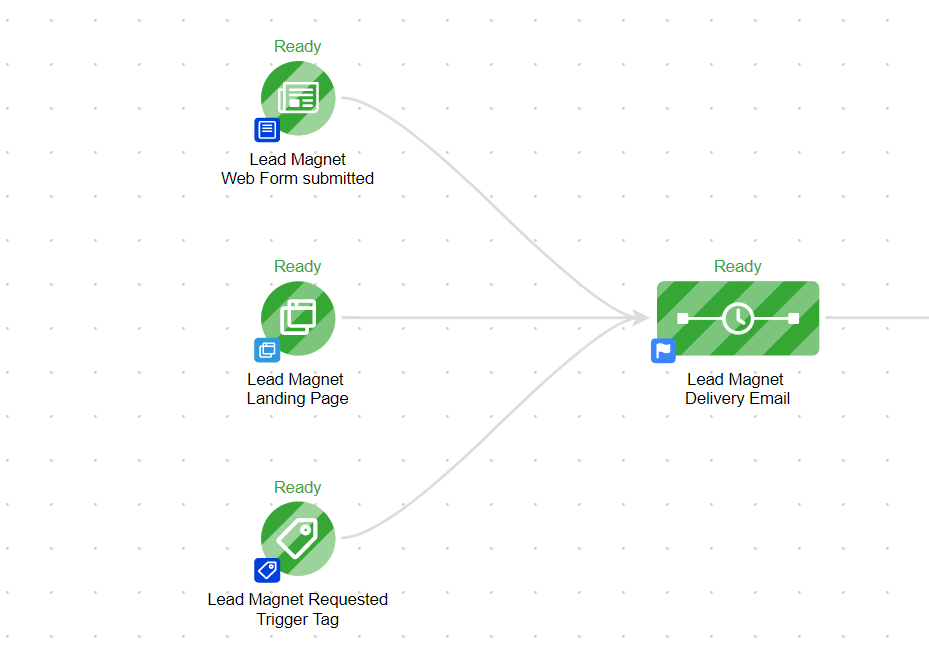
Delivering the lead magnet
Drag a sequence from the campaign tools section and rename this as your delivery sequence. Link this to all of your entry points, as shown above. Drop in an email tool and add your short and sweet delivery email copy. There is no timer here, as your contact is already sitting in anticipation for the lead magnet - so let’s not delay any further!
Note that in this example we have included Historical, Active and Opt-In tags. This is not essential but is part of Keap Max Classic best practices (you can read more about this here). Can we have our gold star now?
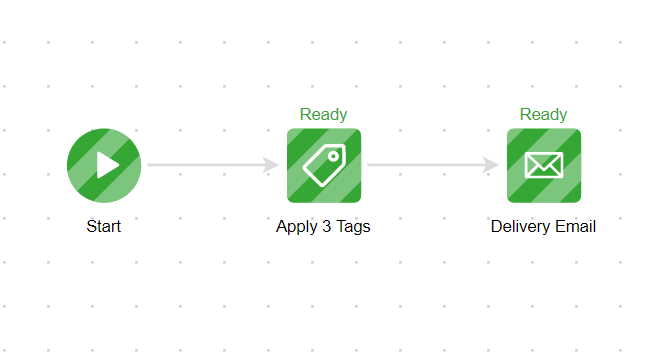
Lead Follow Up - Nurture
Now the reason we are all here. We can’t just leave people sitting with your lead magnet and not give them some oomph to get going with it. In your campaign, add a new sequence after delivery and link them up. Rename this to be your Nurture Follow Up sequence.
We won’t send the email straight away this time but instead will use a delay timer. In this example, we have set the timer for 3 days. Once you have set up your delay timer, you can add in your first lead nurture email. This process is then repeated throughout the sequence until all of your nurture emails are ready to go. It should look like this:

Lead Follow Up - Sales
If you’ve followed our ninja advice, you won’t have been trying to sell anything in your nurture emails. Good. Patience is a virtue - and now is your time to shine those sales.
First, create the sales emails sequence. The sales sequence is set up in the same format as before. Use a separate sequence, aptly named so you know it contains your sales follow up emails. Then create delay timers and emails until you have all your content. It should resemble something like this:

Now before jumping ahead, you want to make sure sales emails are not being sent to existing customers (because let’s face it, that’s annoying as hell when you’re a consumer). Ensure you have a tag that is applied to anyone who has already purchased the product in question (for example Purchased Product 1).
Create an empty sequence for anyone who has already purchased. This sequence will simply let existing purchasers flow out of the campaign and avoid your sales emails. If you have followed the recommended tagging strategy we mentioned earlier, you’ll also want to remove the “Active” tag within this sequence.
Link up both the “Already Purchased” and “Sales” sequences to your Nurture emails. You will see a neat little diamond appear. This is a nifty decision diamond. Double-clicking on the decision diamond will let you decide the “if this or that” strategy for separating your audience.
If a contact has the “product purchased” tag, you’ll want them to run into the empty sequence. Vice versa, if they have not been tagged as having purchased, you’ll want to make sure they get your sales emails. Your decision diamond set up should look like this:
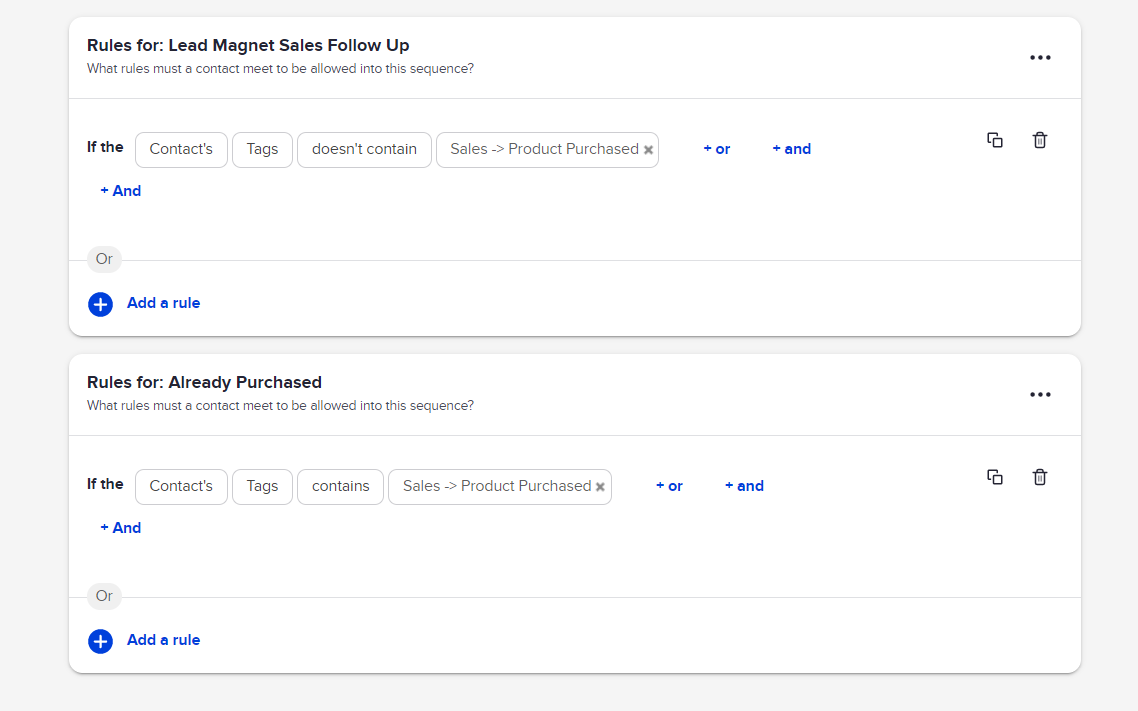
And of course, the hope is that some of those contacts getting your sales emails will now become customers! So to finish off the campaign, you want to make sure that if someone purchases your product, that they don’t receive any more sales emails. Because we all know how annoying that is and we don’t want to chase away new customers just as you’ve got them hooked in.
Add a tag goal at the end of the campaign that will pull purchasers out of the email sequence. Make sure to check you have a system in place that tags purchasers with this specific tag.
Once more, if you have used the recommended tagging strategy, add in a final sequence that holds a tag action to remove the “Active” tag. And that’s your campaign complete! Your final campaign structure should look like this:
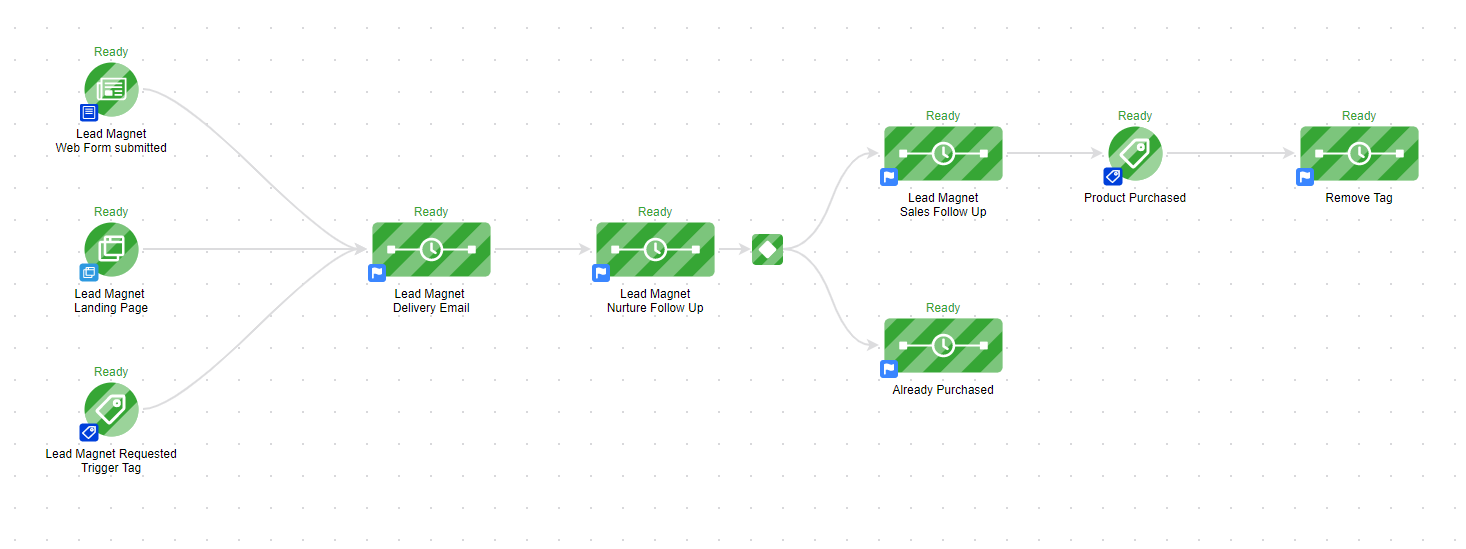
Building a lead follow up campaign in: MailChimp
Building your lead follow up campaign in MailChimp follows a similar train as Keap Max Classic. However, despite being one of the most popular automation platforms, MailChimp is a little less intuitive. But there are some simple workarounds to keep your lead follow up emails on the right track.
The “Customer Journey” section of MailChimp is where they house more complicated automations, and is the section we’ll be using for this example. Let’s dive in.

Triggering the lead magnet campaign
Before you can start building your campaign, you’ll need to choose a trigger option. In MailChimp, you will need to trigger your lead follow up emails with a tag.
Unfortunately, MailChimp does not have the option to send contacts directly from a landing page or web form. However, you can build your landing page or form to make sure contacts are automatically tagged with the correct trigger tag. This will then, in turn, trigger the lead follow up automation.
Delivering the lead magnet
It’s delivery time! Once you’ve chosen your trigger, you’ll be sent to the main automation builder screen. In the same way we set up Keap Max Classic, we will first send contacts an immediate email containing the requested lead magnet.
Click on “Email” in the Actions column on the left-hand side then select the pulsing “+” sign to add this after your trigger tag. You can then go into the email and add your copy and design as you see fit.
Lead follow up: Nurture
After delivery of the lead magnet, we need to move smoothly into nurture emails. Add a delay timer from the Rules section to the next pulsing “+” section, after your delivery email. In this example, we have used a delay of 3 days. Then you can add in your first nurture email.
The above delay-timer -> email strategy can be repeated for the remainder of your nurture emails. Your automation should now look something like this:
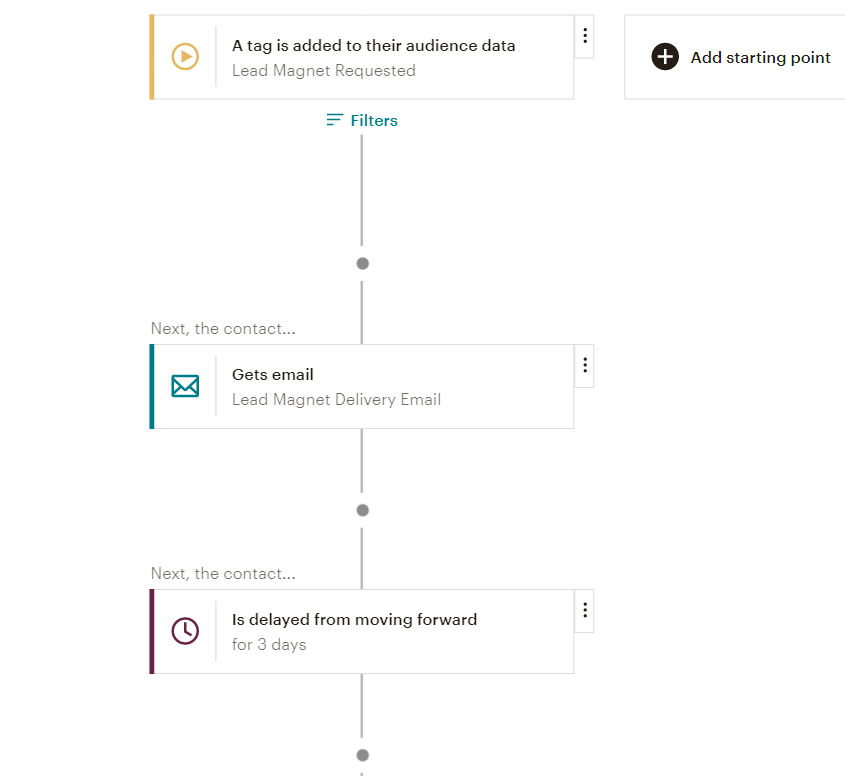
Lead follow up: Sales
Add a final delay timer after your last nurture email. Before jumping into the sales emails, we want to segment your audience. Sending sales emails to people who have already purchased is far from ideal. We don’t want to push away any existing customers.
From the Rules section, add an If/Else action to your automation. You’ll immediately see the flow split into two sections. Open the If/Else action and set up your deciding factor. In this case, you want to make sure that anyone who has your “product purchased” tag, flows out of the sequence under the “Yes” direction. Everyone else (who does not hold the “product purchased” tag) can continue through the campaign.
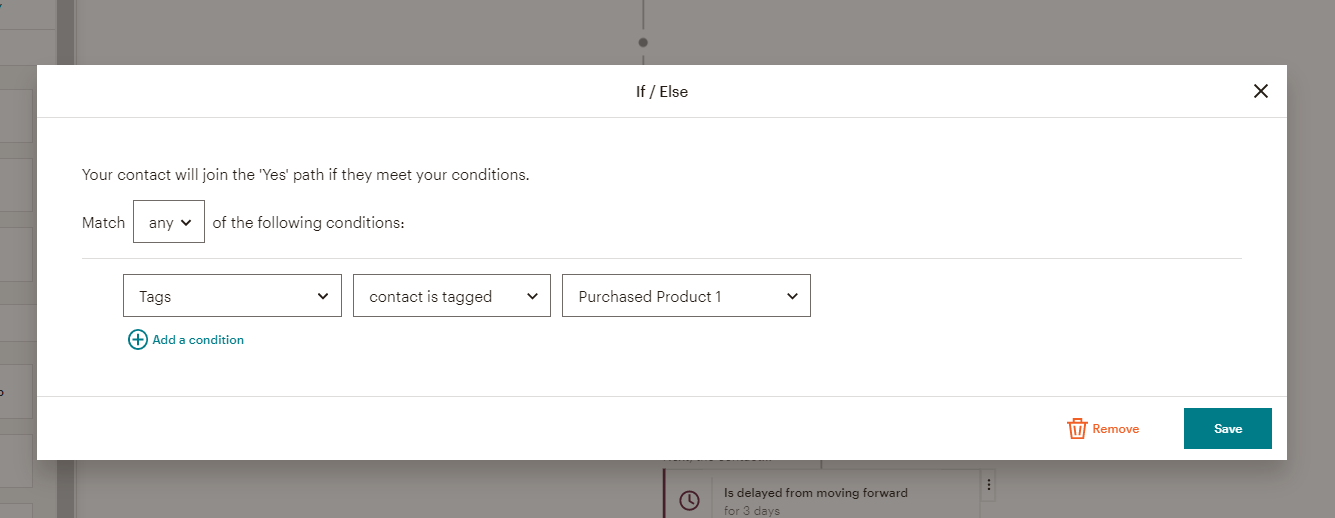
Now you can set up your sales emails under the “No” section. As before, add in your first sales email followed by a delay timer.
Unfortunately, unlike Keap Max Classic, we cannot pull a contact out of your lead follow up emails. This means that if your top-notch sales emails have done their job and someone purchases your product, we cannot let them jump out of the automation early.
But fear not. A rather faffy but effective workaround is continuing to use the If/Else rule after each sales email. Set up in the exact same way, use the If/Else rule to segment your audience after each sales email. Your automation will look like this:
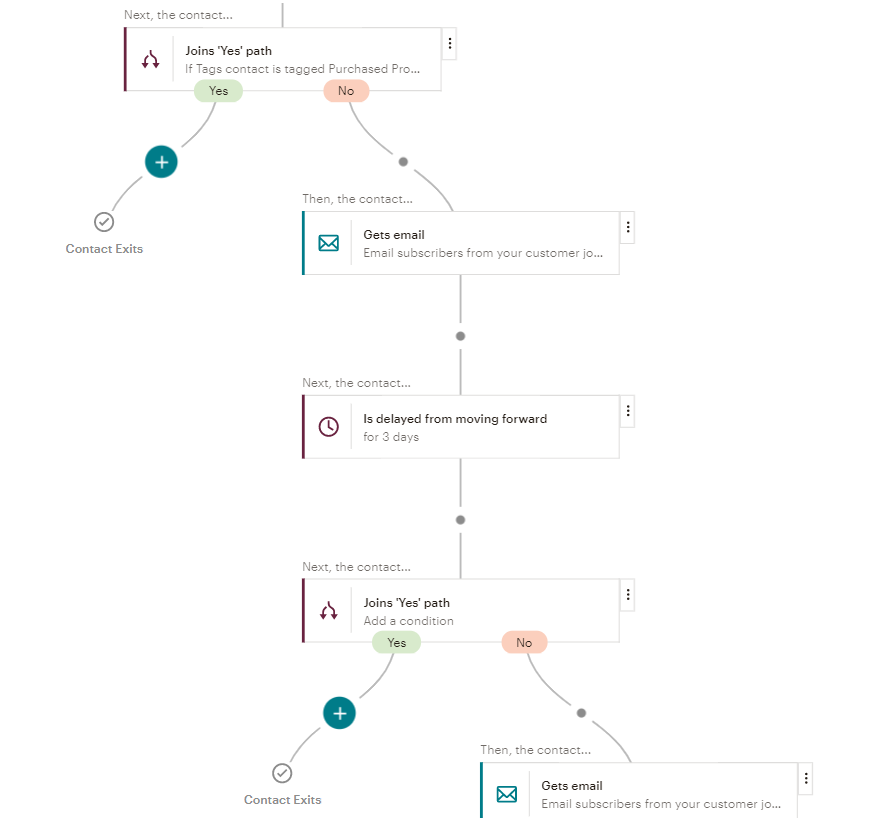
And that is your lead follow up campaign built in MailChimp! While it’s mildly longer in comparison to Keap Max Classic, it is still an effective flow campaign that is easy to work with and will successfully deliver your lead follow up emails.
Ninja top tips for building your lead follow up campaign:
1. Create a landing page for your lead magnet
You can add the landing page to your website or can send people to the landing page from external sources, such as social media. There is far greater flexibility of use compared to a sign-up form that needs hosting.
2. Double, triple and quadruple check the details
There’s a lot of emails, sequences, decision diamonds and if/else options in a lead follow up campaign. Make sure everything is in the correct order and, where applicable, is fully connected (and flowing in the correct direction!)
3. Don’t neglect reporting
Want to know how successful your lead follow up campaign is? You have to get into the habit of checking your statistics and reports. Look at how many people are engaging with your nurture emails. Keep an eye on how many sales conversions you’re getting. Marketing automation is famously all about continuously monitoring and updating as needed, so don’t be afraid to tweak your emails over time.
And there you have it. Now you know how to build a lead follow up campaign in your marketing automation platform. You can throw your lead magnets out into the world now with the comfort of knowing your marketing automation will be doing all the nurture and sales work for you.
Need a little ninja-know-how to help with your lead follow up? Contact us

Sign up to the Brainbox to stay in the loop with the latest marketing news and exclusive content
Or, if you have something specific in mind, reach out to us directly. We're all ears and ready to chat! Contact us here.

